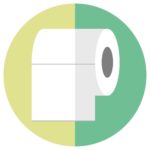This gallery contains 2 photos.
Reviews of Infectious Diseases, Vol. 10, No. 1., 1988. From the Divisions of Infectious Disease, St. Jude Children’s Research Hospital, Memphis, TN The author was surprised to find that there has actually been no research on the benefits of toilet … Continue reading


































